Why a Zen Garden Is the Ultimate Backyard Sanctuary
If you’re seeking a way to transform your backyard into a peaceful escape from daily stress, there’s nothing quite like a zen garden. Rooted in ancient Japanese tradition, zen gardens offer simplicity, harmony, and a sense of balance. By incorporating minimalist design and natural elements, you can create a private haven for meditation, contemplation, or simply unwinding in nature. According to landscape experts, even the smallest yards can become a serene zen paradise with the right approach.
Unlike traditional gardens filled with colorful blooms, zen gardens focus on calming elements such as sand, rocks, and carefully pruned plants. The goal is to evoke tranquility and mindfulness through intentional design. Let’s explore the key benefits and the essential steps to craft your own backyard zen retreat.
Step 1: Plan Your Zen Garden Design and Location
Choosing the Perfect Spot
The first step in creating a zen garden is to select a location that aligns with your vision. Ideally, choose a quiet area of your backyard, away from noisy streets or busy play areas. Privacy is key, so consider spots near fences, walls, or natural barriers. If your yard is small, you can still create a beautiful mini zen garden in a corner or even in raised containers.
Design Considerations and Inspiration
Before you begin, sketch out a simple layout. Traditional zen gardens often feature asymmetrical designs and open space, emphasizing simplicity and negative space. Look for inspiration in Japanese rock gardens (karesansui), which use rocks and raked gravel to symbolize water and landscapes. Decide on the shape, boundaries, and focal points of your garden, and consider how sunlight and shade will affect your chosen spot throughout the day.
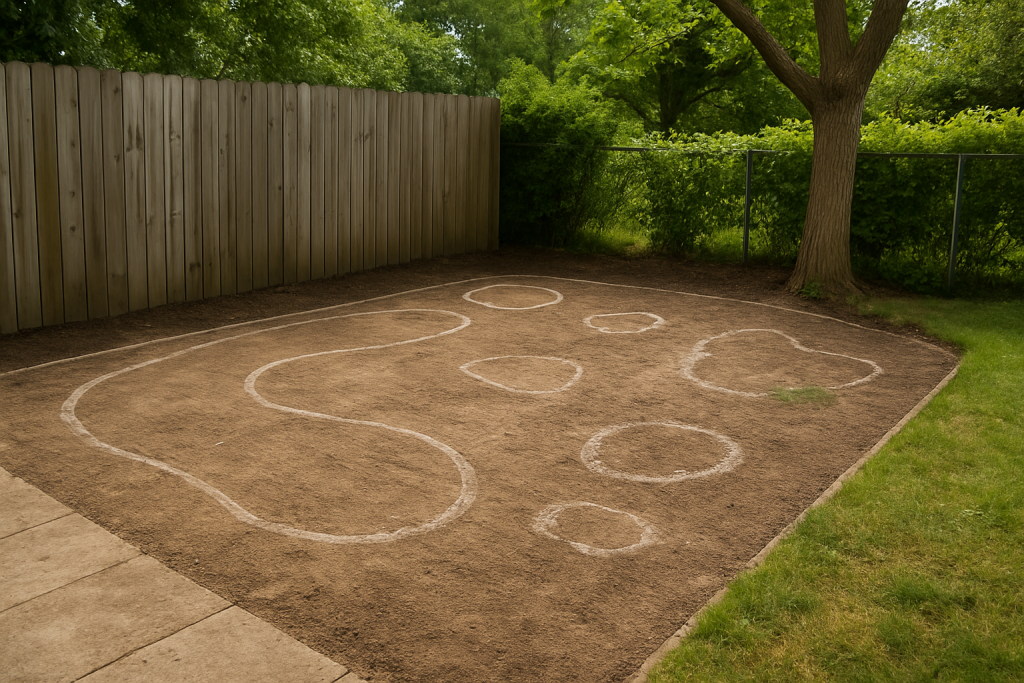
Step 2: Gather Essential Zen Garden Materials
Must-Have Elements for a Zen Landscape
- Sand or Fine Gravel: Used to represent water, raked in calming patterns.
- Rocks and Stones: Symbolize islands, mountains, or bridges in the garden design.
- Plants: Select low-maintenance, slow-growing varieties like moss, ferns, bamboo, or Japanese maples.
- Wooden Elements: Bamboo fencing, benches, or bridges enhance authenticity and structure.
- Ornaments: Add stone lanterns, Buddha statues, or water basins for a spiritual touch.
Gather these materials based on your chosen size and layout. For a minimalist look, focus on fewer, high-impact elements rather than overcrowding your space.
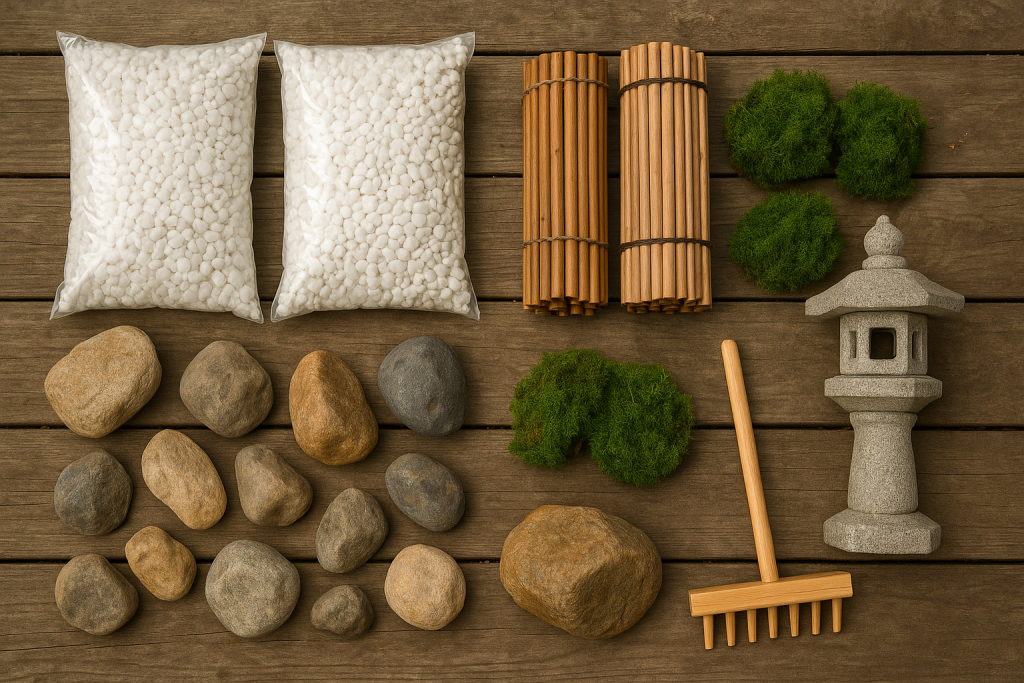
Step 3: Prepare the Ground and Set Boundaries
Clearing and Leveling
Clear the selected area of grass, weeds, and debris. Level the ground thoroughly for an even surface—this step is critical for the crisp, orderly look of a true zen garden. To prevent weeds from returning, lay down a weed barrier fabric before adding any sand or gravel. This will also make maintenance easier in the long run.
Defining the Borders
Use natural materials like wooden planks, stones, or bamboo fencing to outline the boundaries of your garden. Defined edges not only enhance the style, but also keep the sand or gravel contained and tidy. Installing borders at the start makes it easier to maintain a clean, intentional design.
Step 4: Place Rocks and Create Focal Points
Arranging Stones with Purpose
Rocks are perhaps the most symbolic elements in a zen garden. Place large stones first to anchor the design—these typically represent mountains or islands. Arrange smaller stones or pebbles around these “mountains” to create balance and visual interest. Group rocks in odd numbers (3, 5, or 7) for a more natural, organic look, which aligns with Japanese aesthetics.
Designing a Focal Feature
Every zen garden benefits from a visual focal point, such as a standing stone, a small stone lantern, or a unique tree. This draws the eye and encourages mindfulness. Place your focal feature off-center to maintain asymmetry and intrigue. Avoid overcrowding; in zen design, less is more.
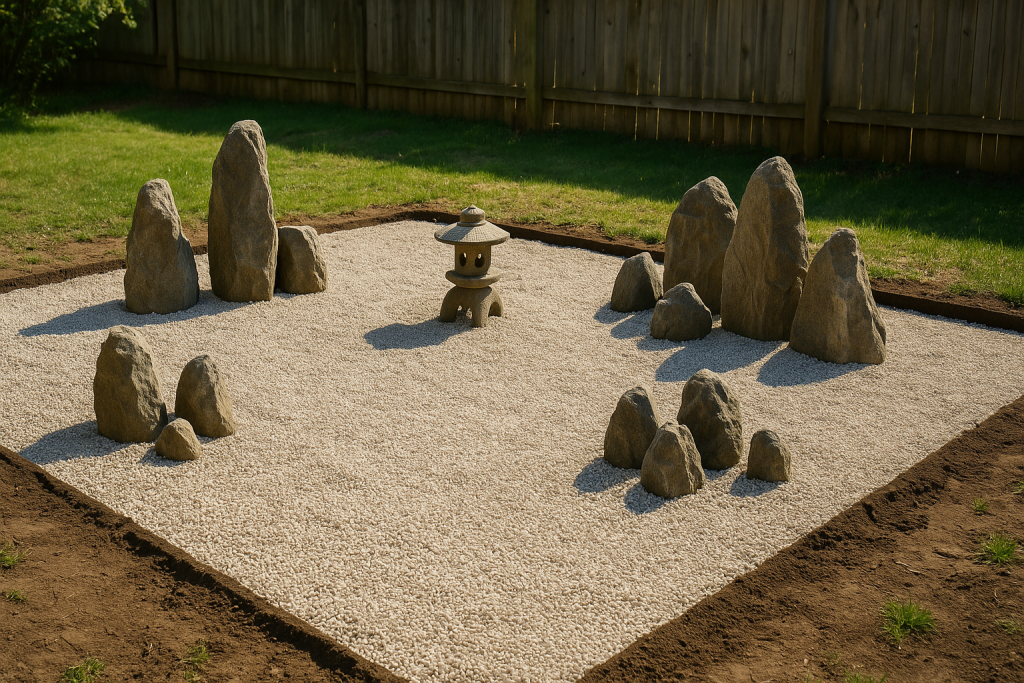
Step 5: Add Sand or Gravel and Rake Tranquil Patterns
Spreading the Sand or Gravel
Pour a layer of clean, fine sand or gravel about 2 inches deep throughout the defined area. Use a rake to level it smoothly. This “sea” of sand represents water, providing a calming visual surface that contrasts with the solid rocks and plants.
Raking Artistic Patterns
Rake gentle patterns—such as ripples, circles, or straight lines—into the sand or gravel. These shapes symbolize the flow of water and promote a meditative state. Change the patterns seasonally or whenever you need a moment of reflection. Many find raking the sand to be a relaxing, mindful practice in itself.
Step 6: Incorporate Zen-Friendly Plants and Greenery
Choosing the Right Plants
Unlike traditional gardens, zen gardens use plants sparingly. Opt for greenery that thrives in your climate and requires little maintenance. Popular choices include moss, dwarf conifers, ferns, Japanese maples, and bamboo. Choose evergreens for year-round color and texture.
Strategic Plant Placement
Place plants in the corners, along the borders, or around rock groupings to soften the overall look. Avoid overcrowding, as open space is key to a tranquil atmosphere. Moss and groundcovers are ideal for filling gaps between rocks or lining shaded areas.
Step 7: Add Finishing Touches for Authenticity and Relaxation
Decorative Ornaments and Features
Personalize your garden with subtle ornaments that enhance its peaceful ambiance. Stone lanterns, pagodas, or Buddha statues are traditional choices. Small water features like a bamboo fountain can introduce the soothing sound of running water.
Creating a Space for Meditation
Consider adding a simple wooden bench or a flat rock for sitting. This turns your zen garden into a functional meditation or relaxation area. Lighting is optional but can extend the enjoyment of your retreat into the evening with soft, solar-powered lanterns.
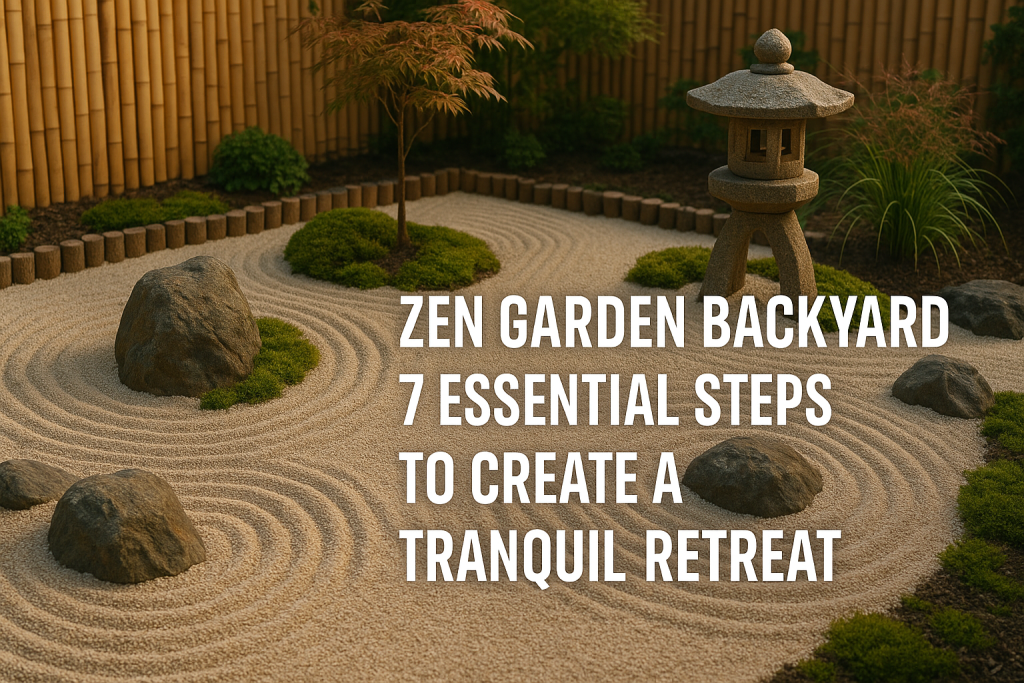
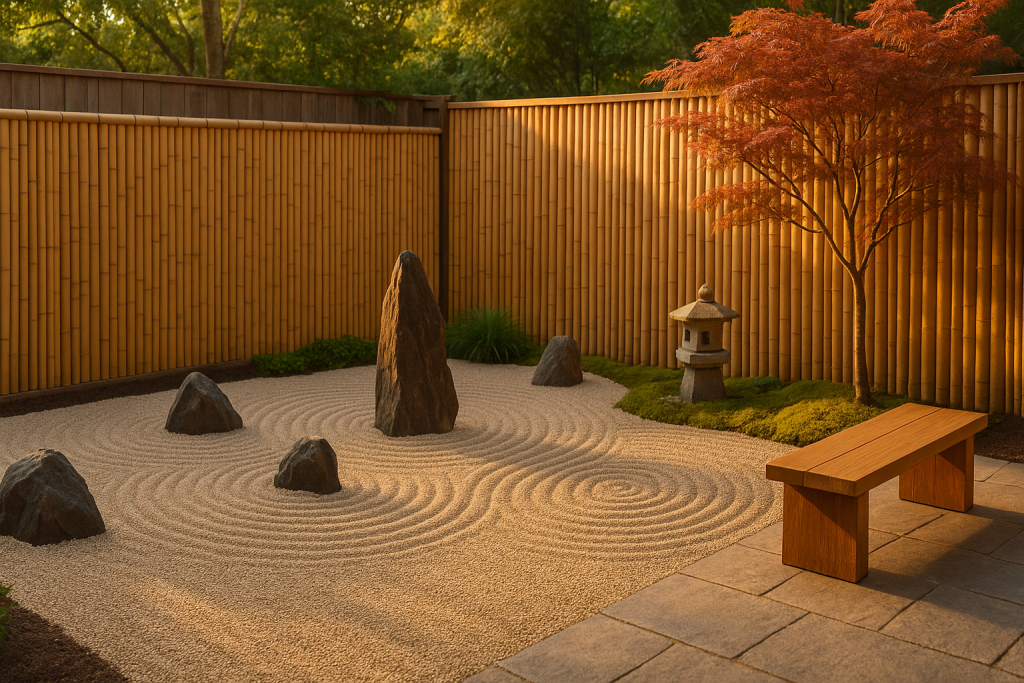
Zen Garden Maintenance: Keeping Your Retreat Serene
One of the greatest advantages of a zen garden is its low maintenance. Remove debris and fallen leaves regularly, and use a rake to refresh sand patterns as needed. Prune plants occasionally to maintain their shape, and check rocks and borders for stability. With minimal effort, your backyard will remain a tranquil oasis year-round.
For busy homeowners, zen gardens offer a manageable, stylish landscaping option that boosts curb appeal and promotes mental well-being at the same time.
Expert Tips for an Inviting Backyard Zen Garden
- Start Small: You don’t need a large yard—begin with a compact space or even a container zen garden.
- Embrace Imperfection: Wabi-sabi, or the beauty of imperfection, is central to zen philosophy. Don’t chase flawless symmetry.
- Stay Minimalist: Less truly is more. Focus on a few carefully chosen elements to avoid clutter.
- Use Quality Materials: Invest in durable rocks, sand, and plants for lasting beauty and less upkeep.
- Engage the Senses: Combine visual elements with sound (fountains), scent (herbs), and touch (smooth stones).
Conclusion: Transform Your Backyard into a Zen Oasis
Creating a zen garden in your backyard is a rewarding way to add tranquility, beauty, and mindfulness to your outdoor space. By following these seven essential steps, you can design a sanctuary that serves as a peaceful refuge from life’s hustle and bustle. Whether you use it for meditation, relaxation, or simply to enjoy the serenity of nature, a zen garden is a timeless investment in your well-being. Start planning your zen retreat today and embrace the art of simplicity in your own backyard.

